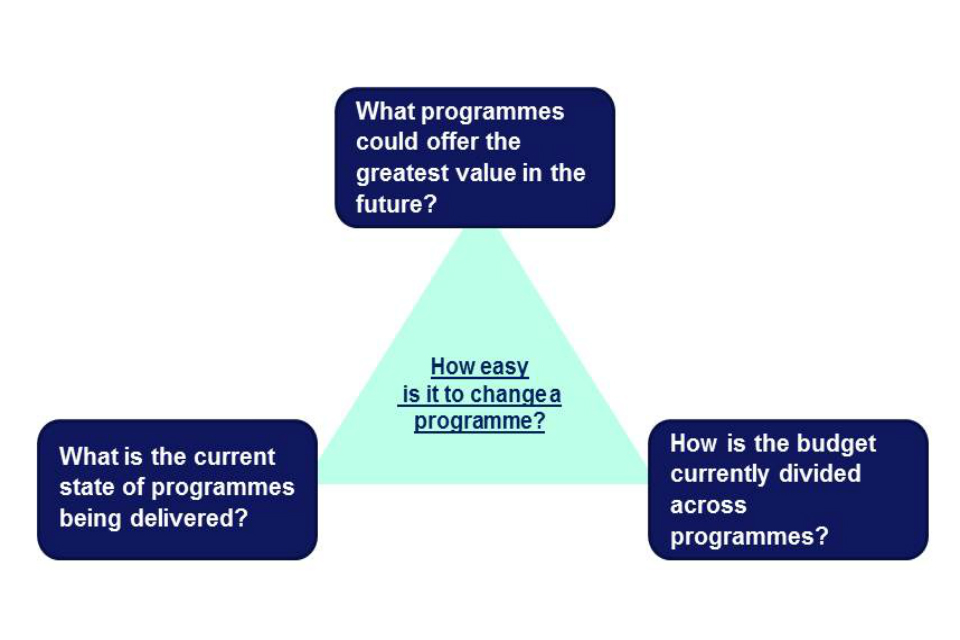Overview of the Prioritisation Framework
Updated 12 November 2019
1. The Prioritisation Framework: how it works
The Prioritisation Framework doesn’t prescribe how budgets should be allocated between programmes. Instead, it allows users to break down big decisions into smaller manageable pieces. It encourages public health teams to think about how to get the best value for money by considering:
- which programmes could offer the greatest value in the future
- the current state of programmes that are being delivered
- the budget currently divided across programmes
- how easy it is for programmes to change
By thinking in this structured way, users will be able to make recommendations on whether to increase, decrease or maintain spend in each programme area.
Figure 1: Overview of prioritisation process

Understanding future value and current state of public health programmes is done through by a technique called multi-criteria decision analysis (MCDA). In MCDA, groups of people get together to decide what are the most important things to consider when deciding between options. These are called criteria. For public health, example criteria could be:
- cost-effectiveness
- how well a programme tackles inequalities
- how many people the programme benefits
The group then reviews and discusses the evidence, before scoring each programme for each criteria, based on the programmes characteristics. Adding together these scores for a programme can indicate, overall which option will produce the greatest value. For further guidance on MCDA, please see this guide from the Department for Communities and Local Government.
2. Informing decisions
Informed by the prioritisation process, the team will produce a set of recommendations to increase, decrease or maintain spend in each programme covered by the public health budget. It is important to remember that the Prioritisation Framework won’t tell you how to spend the public health grant. It will help you come to your own decisions.
3. Using the Prioritisation Framework in your area
A small team of people need to be able to commit to supporting the prioritisation process. A ‘process owner’ (usually a senior member of the public health team) will need to take responsibility for leading the process and completing the Prioritisation Framework.
The experience of local authorities who have conducted a prioritisation exercise suggests that it might require 5 to 10 days of a person’s time, spread across the team, to complete. In addition, it is recommended that you hold 4 half-day workshops during the process. The whole process can take several months to complete.
4. Additional resources and support
To help you better understand how to use the framework, and the benefits of doing so, PHE has created an introductory video. Here, several users and developers of the framework discuss how it has supported decision-making in local authorities.
Prioritisation Framework introductory video
Similarly, the experiences of users from across three local authorities who have adopted the framework is documented in an independent evaluation. The evaluation report can be accessed here. This project was undertaken by a team from the National Institute of Health Research (NIHR) School for Public Health Research’s Centre for Translational Research in Public Health (Fuse).
The tool itself has been designed to be user friendly, and provides extensive guidance at each stage. Further information is provided in the supporting materials pack which is available on request from the PHE health economics team at [email protected].
